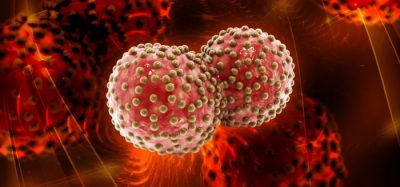Pulmonary ionocytes: unexpected discovery has implications for CF
Posted: 25 October 2023 | Drug Target Review | No comments yet
Researchers found surprising function of pulmonary ionocytes which may affect how cystic fibrosis drugs work.

Researchers at the University of Iowa have discovered that pulmonary ionocytes facilitate the absorption of water and salt from the airway surface, a completely opposite function to what was expected of these cells. This may have implications for cystic fibrosis (CF) lung disease.
Five years ago scientists reported the surprising find of ionocytes, a cell type often present in fish gills and frog skin, in the lining of human lungs and airways. CF researchers were especially intrigued by these pulmonary ionocytes because despite only accounting for about one percent of all the cells in the airway lining, they contain about half of the total amount of CFTR, the dysfunctional protein in CF.
However, the function of CFTR-rich ionocytes has been uncertain, despite the implication that they may have a significant role in CF.
CFTR channels that are present in airway secretory cells secrete chloride ions out of the cell and into the thin layer of liquid that covers the airway surface. This airway surface liquid is crucial for defending the lungs against harmful pathogens and particles. The outflow of chloride ions promotes hydration of the airway surface, as water follows salt. Contrastingly, the new study discovered that CFTR channels in ionocytes do the opposite, absorbing chloride ions and promoting moisture absorption.
Dr Ian Thornell, UI Research Assistant Professor of Internal Medicine and senior author of the study explained: “The key feature that allows ionocytes to absorb chloride is the ionocyte-specific barttin chloride channel on the opposite membrane of the cell from the CFTR channel.” He continued: “Together, these two channels form a conduit for chloride through the ionocyte that helps drain the liquid lining the airways into the body.”
“Together, these two channels form a conduit for chloride through the ionocyte that helps drain the liquid lining the airways into the body.”
The divergent roles of CFTR channels ionocytes and secretory cells also suggests that CF disease disrupts both liquid secretion and absorption. This may have implications for CF lung disease and for how CF drugs affect lung function. Current CFTR modulator therapies restore CFTR channel function, so it is likely that modulators treat both secretion and absorption.
This study was published in The Journal of Clinical Investigation.
Related topics
Drug Targets, Targets
Related conditions
Cystic fibrosis (CF)
Related organisations
Iowa University
Related people
Dr Ian Thornell (University of Iowa)







